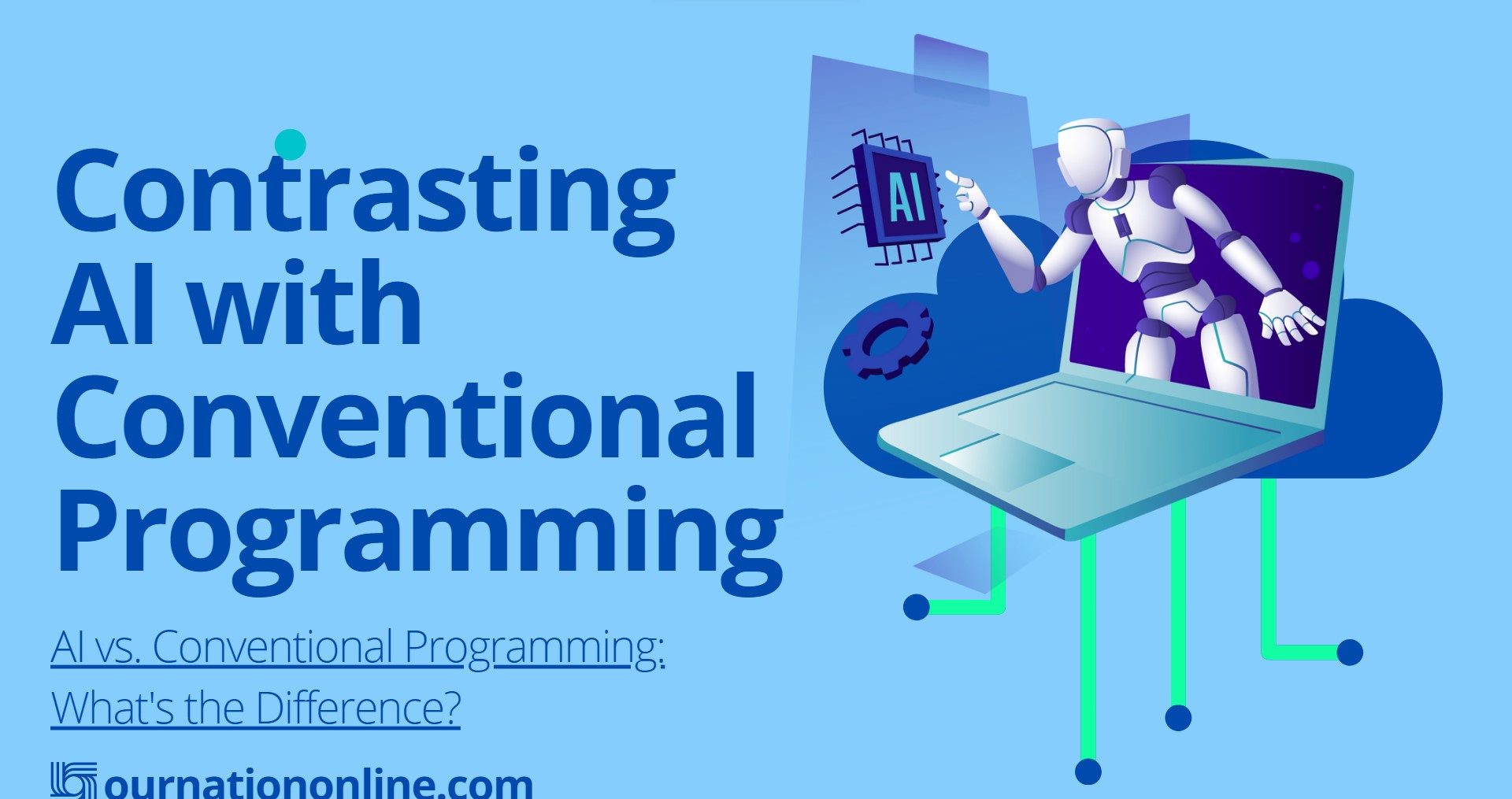Introduction
Artificial Intelligence (AI) is a revolutionary field in computer science that has made significant advancements in recent years, changing the way we interact with technology. To appreciate the capabilities and limitations of AI, it’s essential to understand how it differs from conventional programming. In this user-friendly blog, we’ll delve into the world of AI and explore the various types of AI that exist.
Contrasting AI with Conventional Programming
AI vs. Conventional Programming: What’s the Difference?
AI: Learning from Data
Artificial Intelligence involves systems that can learn and adapt from data without being explicitly programmed. In contrast, conventional programming requires developers to write specific instructions to achieve a predefined task. AI algorithms are designed to improve their performance over time through iterative learning.
Flexibility and Adaptability
AI systems are flexible and adaptable, capable of handling tasks they were not explicitly designed for. Traditional programming, on the other hand, is rigid and needs updates to accommodate new functionalities.
Handling Complex Data
AI can process and make sense of large datasets, such as images, audio, and natural language, which are challenging for conventional programming. AI uses techniques like machine learning, deep learning, and natural language processing to interpret this complex data.
Real-World Examples
Contrasting AI with conventional programming, consider a chatbot. AI-driven chatbots can understand and respond to natural language, while conventional programming might require a predefined set of rules and responses.
Understanding the Strengths and Limitations of AI
Strengths of AI
- Automation: AI can automate repetitive tasks, increasing efficiency.
- Personalization: AI can provide personalized recommendations and experiences.
- Handling Complex Data: AI excels at processing and analyzing vast datasets.
- Continuous Learning: AI can improve with more data and experience.
- Adaptability: AI can handle a wide range of tasks and contexts.
Limitations of AI
- Lack of Common Sense: AI often lacks human common sense, leading to errors.
- Data Dependency: AI’s performance relies on quality and quantity of data.
- Ethical Concerns: Bias in AI algorithms and privacy issues.
- Resource-Intensive: Developing and training AI models can be resource-intensive.
- Limited Creativity: AI struggles with creativity and problem-solving outside defined patterns.
Types of AI
Narrow or Weak AI
Narrow AI, also known as Weak AI, is designed for a specific task or domain. Examples include virtual assistants like Siri and Alexa, recommendation systems, and image recognition software.
General or Strong AI
General AI, or Strong AI, is the Holy Grail of AI. It possesses human-like intelligence, can understand, learn, and perform any intellectual task a human can. We have not yet achieved this level of AI.
Machine Learning
Machine learning is a subset of AI that uses algorithms to learn patterns from data. It powers applications like spam filters, fraud detection, and even self-driving cars.
Deep Learning
Deep learning is a subset of machine learning using artificial neural networks to process data. It’s behind many breakthroughs in image and speech recognition, as well as natural language understanding.
Reinforcement Learning
Reinforcement learning involves training an AI agent to make decisions by rewarding it for desired actions. It’s used in gaming, robotics, and autonomous systems.
Conclusion
Artificial Intelligence is a transformative technology that has already changed the way we interact with computers and devices. Understanding the differences between AI and conventional programming helps us appreciate the capabilities and limitations of this field. AI is a powerful tool that can automate tasks, handle complex data, and adapt to various situations. Still, it has its limitations, including ethical concerns and the need for high-quality data.
Q&A
Q1: What is a simple definition of AI?
A1: AI stands for Artificial Intelligence, which involves creating machines or software that can perform tasks requiring human-like intelligence.
Q2: What is AI, and can you provide an example?
A2: AI, or Artificial Intelligence, is used in virtual assistants like Siri and Alexa, recommendation systems, and image recognition in smartphones.
Q3: What are the four types of AI?
A3: The four primary types of AI are Narrow AI (task-specific), General AI (human-like intelligence), Machine Learning (learning from data), and Deep Learning (neural networks).
Q4: Where is AI used?
A4: AI is used in healthcare, finance, transportation, retail, entertainment, manufacturing, natural language processing, and robotics, among other fields.



Pingback: Unleashing Creativity: Leonardo AI Image-to-Image Transformation - ournationonline Leonardo ai image to image